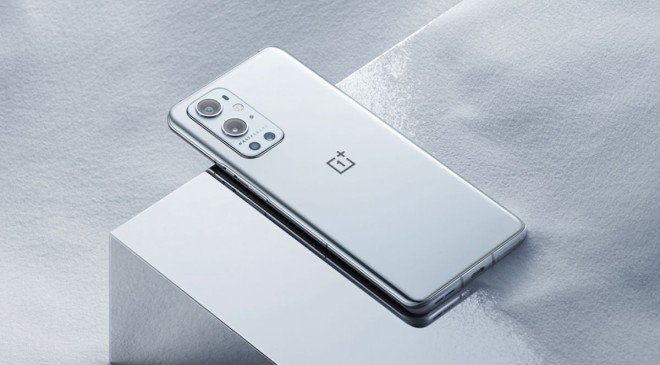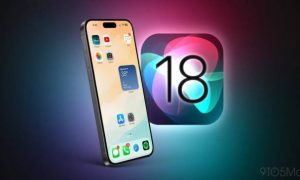Android flagship phones don’t get much better than the OnePlus 9 Pro. It’s got the charm, power and good cameras. Still, low light photography needs quick sorting.
There are Android phones. There are flagship Android phones. There are flagship alternative Android phones. And then there are Android phones made by OnePlus, which have carved not just a unique identity for themselves, but pretty much sit as the benchmark that most of the relatively more affordable flagship Android phones get compared with. And compare themselves with. While also giving the more expensive flagship phones a serious case of anxiety. It’s been that way for years now, even though a lot of rivals have come close in recent times and continue to try and match the overall proposition, yet that is testament to the consistency, the quality and the experience that OnePlus phones deliver for the money you spend. They’ve effortlessly, and with every iteration, pitched a flagship-esque smartphone experience without making you spend actual flagship phone prices. Be it the very first OnePlus One or the more recent OnePlus 7, the OnePlus 7T series, the OnePlus 8 or the OnePlus 8T. Which is exactly why I have great hopes from the OnePlus 9 Pro, also called the OnePlus 9 Pro 5G and indeed the OnePlus 9, to not only take forward that tradition but also dial in the expected generational step forward as far as the overall experience is concerned.
EXPLAINING THE ONEPLUS 9 PRO VARIANTS
The OnePlus 9 Pro 5G is the most expensive OnePlus phone just yet. The OnePlus 9 Pro gets two RAM and two storage options. That’s 8GB and 12GB of RAM and your choice between 128GB and 256GB RAM. So, your choices are between the 8GB+128GB configuration that is priced at Rs 64,999 and the 12GB+256GB configuration which costs Rs 69,999. Both variants can be had in all three colours—Morning Mist, Pine Green and Stellar Black. The OnePlus 9 Pro’s immediate rivals, in terms of the direct price comparison, include the Samsung Galaxy S21 (prices start Rs 69,999). Yet, if you are eyeing the Samsung Galaxy S21+ (prices start Rs 81,999), you could actually do well to save some money instead and consider the OnePlus 9 Pro. That being said, more competition is on the way with the Xiaomi Mi 11 Pro and the Mi 11 Ultra arriving soon—though we don’t know their India prices just yet, but expected to be there and thereabouts.
ONEPLUS 9 PRO DESIGN: BEAUTY DOESN’T ONLY LIE IN THE EYES OF THE BEHOLDER
OnePlus has always made beautiful phones. That doesn’t change with the OnePlus 9 Pro. Since there wasn’t an 8T Pro last year, we’ll have to compare the design elements not just with the OnePlus 8T but also the OnePlus 8 Pro from a bit earlier. There seems to be that undeniable familiarity of the past, and yet enough has changed to give the OnePlus 9 Pro its own personality. The screen illuminated and as you hold the phone, the OnePlus 9 Pro very much has that family resemblance. Familiarity is always good, particular for someone who may be upgrading. In particular, the Alert Slider which continues to be the highlight—it is incredibly simple to switch the phone from Ring to Vibrate to Silent, depending on what you need, by simply using this physical key. No other Android phone seems to think this is important enough to integrate, but believe me, you’ll get used to this in a jiffy and then miss this on every other Android phone. It is incredibly simple. You slide the toggle without having to unlock the phone, great if you are about to start driving or stepping into a meeting, and don’t want to be disturbed.
Things have also changed though. And all for the better. The OnePlus 9 Pro gets the IP68 water and dust resistance rating. Anything less would have been a glaring omission for a flagship Android phone. You’ll see the Hasselblad branding on the camera module on the back, which makes the seriousness of intent very clear from the outset. There are new colours too. What you see photographed here is the Morning Mist which looks mirror-esque reflective but try to see your reflection off it and you’ll notice the very subtle frosting effect. I’m genuinely amazed at how this doesn’t really catch any fingerprints or smudges and doesn’t attract dust either. Its slipper though, as a result of the really smooth finish on the back, so be a bit careful on that front. Then there is the Pine Green, which I haven’t seen in person, but it looks absolutely delightful in photos—and that would be my recommendation, by far and away. And this comes from someone who used the Apple iPhone 11 Pro Max for the longest time, in the gorgeous Midnight Green colour, and loved it. Last but not least is more conventional Stellar Black, which tries to rekindle the blast from the past with the matte sandstone look. The OnePlus 9 Pro weighs 197 grams, which to be honest isn’t much lesser than the 199 grams the OnePlus 8 Pro registered on the scales, but the OnePlus 9 Pro just feels a lot more balanced and genuinely weighs much lesser than what the numbers suggest.
ONEPLUS 9 PRO PERFORMANCE: IT DOESN’T GET MUCH FASTER THAN THIS, JUST YET
Under the hood of the OnePlus 9 Pro is the Qualcomm Snapdragon 888 chip. That’s the latest and the most powerful chip you’ll find in the Android smartphone space, and one of the first movers on that front. Your choice between 8GB RAM and 12GB RAM. To be fair, both specs will be really performance oriented, though 12GB in your phone will give you some bragging rights! Never has OnePlus tried to palm off an older generation processor and tried to sugarcoat it, and that isn’t changing now. This chip really takes the game forward compared with the predecessor, the Snapdragon 865 series—this is as much as 25% faster with CPU performance and the graphics are up to 35% more powerful. There are advantages of the new 5nm architecture. Add to that the benefits of the LPDDR5 RAM and the UFS 3.1 storage, and everything comes together very nicely on the performance front. In my usage, the OnePlus 9 Pro simply ticked off all the boxes on a checklist. Albeit the slight heating I noticed in the first 24 hours of setting up this phone, the OnePlus 9 Pro has remained pretty cool since. In more ways than one. That initial heating could be attributed to apps being restored, data being synced and search indexing as well.
It is not just the raw power of the hardware. While OxygenOS got a significant visual overhaul on board the OnePlus 8T last year, there are still significant improvements on the visual side as well as tweaks to improve everything on the usability front. What’ll make the most difference as you use the OnePlus 9 Pro every day is the updated TurboBoost 3.0 feature, which uses RAM compression and using the fast storage as virtual RAM to give you more space to leave more apps open in the background. For starters, it’ll not be easy for you to make the OnePlus 9 Pro struggle even slightly, irrespective of whether it is 8GB RAM or 12GB RAM. But this gives you more headroom anyway. This is a method we have seen before on Windows PCs too, with varying degrees of success. All in all, OxygenOS remains incredibly intuitive to use, is silky smooth and just looks easy on the eye as well. The three things, together, can’t always be said about a lot of other Android phones.
There are still a few rough edges or omissions that I notice with OxygenOS, that could do well with some attention, but remain minor niggles. For instance, when using the Microsoft Edge web browser, tap on the search bar and the Gboard keyboard takes more than a couple of seconds to arrive on the scene. Have not noticed this behaviour in other Android phones. Secondly, in the Gallery app, there is still no option for auto enhance editing—a lot of users prefer that, and it is something that flagship phones do tend to have. Third, when cropping an image using the edit tools in the Gallery, the borders are so thick that you can’t really make a fine adjustment with crops unless you’re really lucky. Also, in the camera app, there is an option in the Photos mode called “High Res”—you’ll find this by tapping on the three-dot menu on the corner of the screen. But it isn’t immediately clear to most users what this entails and could be a bit more descriptive.
OnePlus’s latest quest to make smartphone charging even faster leads is to the combination of Warp Charge 65T, which when you’re using the OnePlus charger, takes this from a fully discharged state to 100% in about 29 minutes. That’s a pretty rapid rate, no matter which way you look at it, for a 4500mAh battery. But it is the second part of this chapter which will make you sit up and take notice. The Warp Charge 50 Wireless does this in a way that both cells of the battery get charged at 25W each. That’s using the dual charging coils of the new OnePlus Warp Charge 50 Wireless charger. You’ll need to buy this separately and it’ll cost you around Rs 5,990. It isn’t limited to just the OnePlus phones though. If you have another phone which supports wireless charging, it can deliver up to 45W of wireless charging for those too. In my book, and budget permitting, this is a must-have accessory to have.
ONEPLUS 9 PRO CAMERA: HASSELBLAD INPUTS ARE MAKING A DIFFERENCE, BUT WORK REMAINS
There’s a reason, in case you’re perplexed and cursing me as a result, as to why I haven’t spoken about the camera first. That is because the OnePlus 9 Pro’s camera system demands such a detailed conversation, I wanted to get the other important observations out of the way first. Let me make this clear from the outset—OnePlus is really serious about the camera performance and have called in support from the experts over at the Swedish photography giants Hasselblad. OnePlus CEO Pete Lau has already confirmed to News18 that the partnership with Hasselblad is a long-term one. Clearly, this isn’t going to be a one off, no matter what. And it shouldn’t be, because a lot is at stake for OnePlus, now that it is firmly in the really serious Android flagship phone battles. There will be unrelenting comparisons with the likes of the Samsung Galaxy S21 series and indeed the Apple iPhone 12 series, and indeed whatever else is to come.
The hardware first. You’ll get a 48-megapixel main camera, a 50-megapixel ultrawide camera, an 8-megapixel telephoto camera and a 2-megapixel monochrome camera. Pixel binning means its 4 pixels in 1 in the default 12-megapixel image size setting. The camera module on the back proudly shows off the special Hasselblad ingredients, and that really pushes up expectations. Easier said than done, but this gives the OnePlus 9 Pro a really strong footing to build on for the photography experience. It has to be said, and no words minced, that previous OnePlus phones have promised a lot as a camera too, yet more often delivered often but not always. So, what’s Hasselblad really doing? First and foremost, you’ll see a Hasselblad Pro Mode in the camera app. If you want to have greater control over how your photos look, this gives you everything you’d expect—ISO, focus, exposure and more manual adjustments. You can shoot in 12-bit RAW too, which is expected to give as much as 64x colour compared to traditional 10-bit RAW images. Then there is Hasselblad’s colour calibration which should make the OnePlus 9 Pro’s photos lean even more towards accuracy and realism.
t the time of writing this, the OnePlus 9 Pro review device that sits in my hands has received one OxygenOS update, which also included improvements for the camera. That means we are testing the camera performance with the latest updates that are available at this time. There are two very distinct parts to my observations about the camera on the OnePlus 9 Pro. First is the part where you’ll be using this for good light photos, that is, daytime and indoor photos. Everything comes together very nicely here, the hardware and the software. These photos look really pleasing to the eye, with really good colours to add to the visual treat. Photos are crisp but not overly sharp, there is really good dynamic range, it doesn’t get stumped if you are photographing in the direction of the light source and it genuinely pulls in a lot more detailing than its predecessors. The OnePlus 9 Pro is also better than any of its elder siblings, with focus locking and being able to capture motion without the results being a blurry mess. That being said, even though some shots of my daughter were still a bit of a blur, the OnePlus 9 Pro came really close to matching the Apple iPhone 12 Pro Max’s motion capture performance of an excitable child. Not a lot of Android phones handle this sort of thing as well, and that makes the OnePlus 9 Pro one of the better camera bets for sure.
There’s 30x digital zoom which should be acceptably usable as long as you have really stable hands or are using a tripod, but within this, it is the 3.3x optical zoom that really sets the bar high. Working with optical image stabilization (OIS), you can really zoom in on subjects without having to compromise on cropped images that end up with reduced clarity to work with.
Yet, it is with low light photos that a lot of work still needs to be done. Make no mistake about it. The hardware is very much in place. All that is needed is some amount of tweaking on the software side of things to make low-light photos deliver on the lofty expectations the OnePlus 9 Pro’s camera rightly sets. At this time, there are a couple of shortcomings that are quite visible in low-light photos. First, the darker parts of a photo look really dark and that’s where a lot of the finer detailing is lost. You can manually focus to improve things a bit, but that’s still some way off the ideal results. Secondly, whites tend to lean more towards the warmth of whatever light there is, rather than actually look like how they did really. The same frame, clicked thrice in quick succession, had three different results—warm colours, warm colours with a pink hue and a yellow bias. That being said, low light photos do still retain a lot of detailing, which is something the camera should be able to work better with.
ONEPLUS 9 PRO DISPLAY: WHEN A SMARTPHONE DISPLAY BECOMES SMART BEHIND THE SCENES
The OnePlus 9 Pro gets what the company calls a Fluid Display 2.0, and it is essentially a low-temperature polycrystalline oxide, or LTPO display tech. Pretty looking screen and quite interesting too, with what it does behind the scenes. For an Android flagship phone, expecting a 120Hz display refresh rate is now par for the course. The tweak that OnePlus have done here is the Smart 120Hz feature. Simply put, this reduces the display refresh rate to as low as 1Hz depending on what you are doing on the screen. Maximum of course, if need be, being 120Hz. The idea is that when not needed, the refresh rate reduction saves significantly on battery drain. You don’t really need smoother scrolling if you are simply looking at photos or reading an e-book. As you scroll quickly up and down a web page or perhaps your Instagram feed, the refresh rate kicks up to 120Hz. If you’re watching videos, this restricts itself to 24Hz. The switching is very smooth, and you’ll never visually realize any changes as they happen.
This is an absolutely fantastic canvas to work with. This 6.7-inch screen has a 3216 x 1440 resolution and supports 10-bit colour depth. It can be really bright and that means you won’t be struggling with visibility and reflections under the bright summer sun. Colours look really sophisticated—my favorite has to be the Display P3 calibration settings, because I like this subdued vibrancy of colours the most. I also prefer to keep Comfort Tone switched on, which basically alters the colours on the screen to match your ambient lighting, to reduce eye strain. More than that, the screen doesn’t look out of place either—you don’t make that jarring transition from warm light around you to a comparatively cool colour tone display, for instance.
THE LAST WORD: ALL THE INGREDIENTS OF A SERIOUS FLAGSHIP PHONE
Android flagship phones really don’t get much better than the OnePlus 9 Pro. There’s a very sophisticated charm that the phone has, even more than the very agreeable and yet visually appealing predecessors, including the likes of the OnePlus 8 Pro and the OnePlus 8T. This packs serious power under the hood, consistent battery life, serious step forward in wireless fast charging tech and OxygenOS that continues to improve on the smallest of things. The OnePlus 9 Pro sees a real upgrade as far as the cameras are concerned and there is the promise of a lot more as software updates iron out what is needed to be ironed out. It genuinely feels great to hold and use the OnePlus 9 Pro, and there’s that feeling of completeness which is a notch above most phones this competes with



































